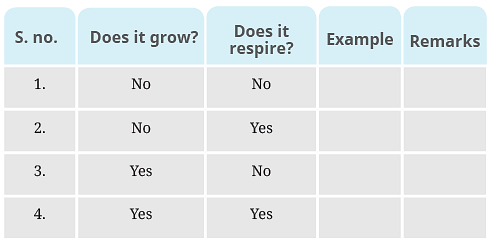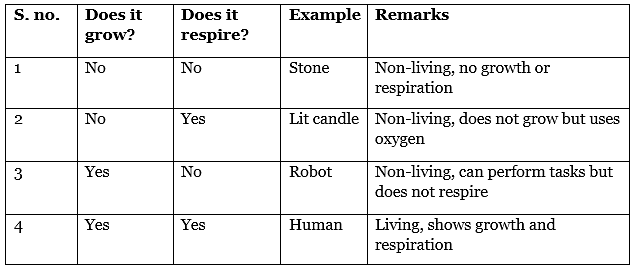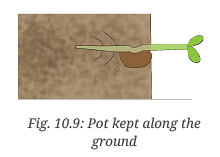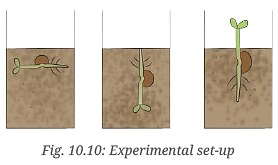Chapter 09 Methods of Separation in Everyday Life Solution
November 5, 2024Chapter 11 Nature’s Treasures Solutions
November 5, 2024Chapter 10 Living Creatures: Exploring their Characteristics Text Book Solutions
Let us enhance our learning
Q1: List the similarities and differences in life cycles of plants and animals.
Ans:
Similarities:
Both plants and animals grow and develop over time.
Both undergo different stages in their life cycles (e.g., seed to plant, egg to adult).
Both reproduce to maintain the continuity of their kind.
Differences:
Plants grow continuously throughout their life while animals have a fixed growth period.
Animals move from one place to another, while most plants are stationary.
The life cycle stages of animals often include significant physical changes, such as metamorphosis, while plants primarily undergo changes in size and structure.
Q2: The table on the next page shows some data. Study the data and try to find out examples appropriate for the conditions given in the second and third columns. If you think that an example for any of the conditions given below is not possible, explain why.

Ans:

Q3: You have learnt that different conditions are required for seed germination. How can we use this knowledge for proper storage of grains and pulses?
Ans: To store grains and pulses properly, keep them in a cool, dry place with good ventilation to prevent moisture buildup. This inhibits germination and fungal growth. Use airtight containers to protect against pests.
Q4: You have learnt that a tail is present in a tadpole but it disappears as it grows into a frog. What is the advantage of having a tail in the tadpole stage?
Ans: The tail helps tadpoles swim efficiently in water, aiding in movement and feeding. As they mature, legs develop for terrestrial mobility, making the tail redundant.
Q5: Charan says that a wooden log is non-living as it cannot move. Charu counters it by saying that it is living because it is made of wood obtained from trees. Give your arguments in favour or against the two statements given by Charan and Charu.
Ans:
Against Charan: The wooden log was once part of a living tree, which was alive and exhibited characteristics of living beings.
Against Charu: Once the wood is separated from the tree, it no longer exhibits growth, reproduction, or other life processes, making it non-living.
Q6: What are the similarities and distinguishing features in the life cycles of a mosquito and a frog?
Ans:
Similarities:
Both undergo metamorphosis with distinct life stages.
Both start life as eggs.
Differences:
- Mosquitoes have four stages: egg, larva, pupa, adult.
- Frogs have stages: egg, tadpole, froglet, adult.
Mosquitoes are entirely terrestrial in adult stages, while frogs can live both on land and in water.
Q7: A plant is provided with all the conditions suitable for its growth (Fig. 10.9). Draw what you expect to see in the shoot and the root of the plant after one week. Write down the reasons.

Ans:
Expected Observations:
Shoot: Growth upwards, towards the light source.
Root: Growth downwards, into the soil for stability and nutrient absorption.
Reasons:
Shoots grow towards light (phototropism) for photosynthesis.
Roots grow downwards (gravitropism) for anchorage and nutrient absorption.
Q8: Tara and Vijay set up the experiment shown in the picture (Fig. 10.10). What do you think they want to find out? How will they know if they are correct?

Ans:
Objective: To determine the effect of light direction on plant growth.
Confirmation: If the plant in the experiment grows towards the light source (hole in the box), they can conclude that light direction influences plant growth (phototropism).
Q9: Design an experiment to check if temperature has an effect on seed germination.
Ans:
Experiment:
Take three identical pots filled with garden soil and sow bean seeds in each.
Place one pot in a warm environment, one in a cool environment, and one at room temperature.
Ensure all other conditions (light, water, soil) are identical.
Observe and record the germination rate and seedling growth over 10 days.
Expected Observation: Seeds in the warm environment may germinate faster than those in cooler temperatures, demonstrating the effect of temperature on germination.

